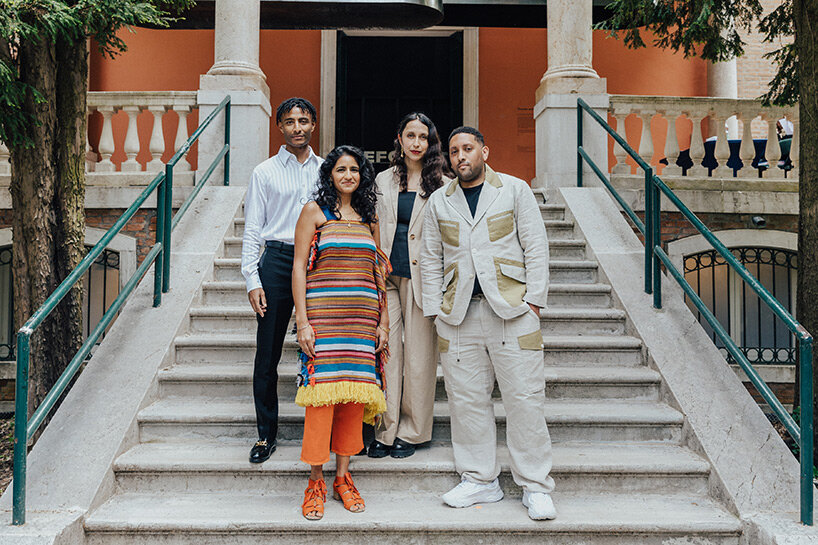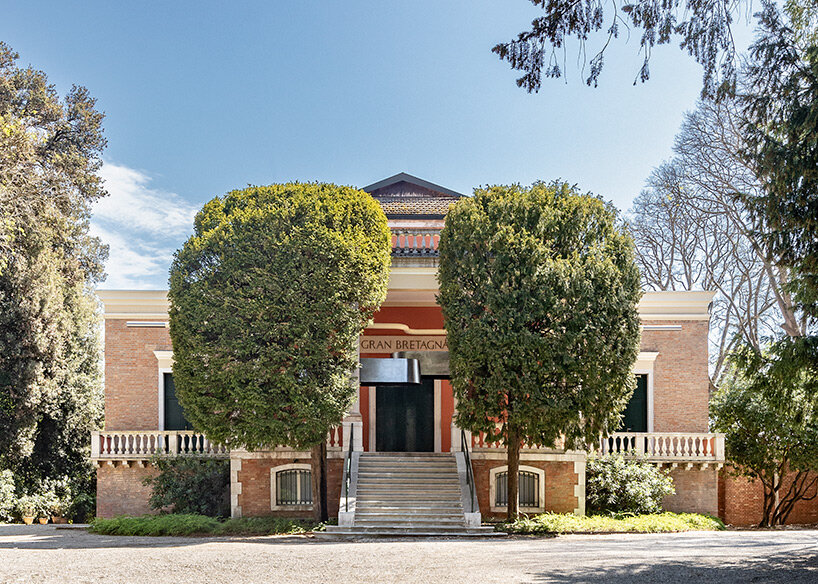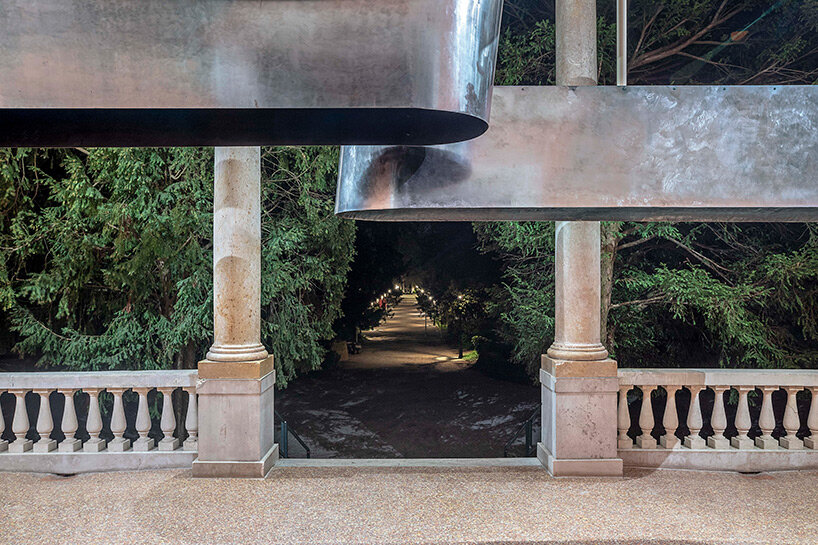British Pavilion presents Dancing Before the Moon at venice architecture biennale
The British Council, with a team of four curators and six artists, presents a series of new works for the 18th Venice Architecture Biennale. Named Dancing Before the Moon, the British Pavilion runs from May 20 to November 26, 2023. Curated by Jayden Ali, Joseph Henry, Meneesha Kellay, and Sumitra Upham, the exhibit explores the importance of everyday rituals in establishing communities, and is showcased through film and sound design.
‘Dancing Before the Moon is a provocation about how we think about our built environment. The focus of this exhibition is on everyday rituals and how, particularly within diasporic communities, rituals can be used as a way of thinking differently about how we occupy space because people use space.’ Introduces Sevra Davis, commissioner of the British Pavilion, in an interview with designboom at Dancing Before the Moon.

the Dancing Before the Moon curatorial team on the steps of the British Pavilion
British pavilion comprises new film work and six installations
Dancing Before the Moon sees a series of installations, transforming the pavilion to represent a future where social practices are celebrated for connecting people. The main hall of the pavilion consists of a large cinematic installation with a film highlighting the central role that rituals play in reflecting the traditions and values. Inside the pavilion, galleries focus on material objects conceived and produced by UK-based artists: Yussef Agbo-Ola, Mac Collins, Shawanda Corbett, Madhav Kidao and Sandra Poulson.

the British Council commissioned a team of four curators and six artists
image © British Council
Making the portico ‘more than a space for arrival’
On the first approach, visitors to the British Pavilion encounter an exterior installation by Jayden Ali. In this hammered-steel installation Ali explores his ancestral ties to the islands of Trinidad and Cyprus by representing pastimes Trinidad steel-pan playing and Cypriot cooking – rituals that became critical to the descendants of these colonized islands claiming space in the UK.
‘Alongside the film work and internal installations, Jayden Ali brought his sculptures outside to the portico space. This move rivals the architecture of the pavilion and makes the entrance part of the exhibition rather than just a space for arrival.’ Comments Sevra Davis on the decision to contain part of the exhibition outside.

Thunder and Şimşek exterior installation by Jayden Ali
image © British Council
Aspirations for the British Pavilion
Collectively, this British Pavilion champions a notion that architecture is intangible, and cross-pollinates with performance, craft and other creative disciplines, while being shaped by people.
‘I hope that people who visit this pavilion will come away feeling uplifted and inspired, and challenged to consider rituals in their own individual community. Many of us don’t live in the place that we or our ancestors were born, and it is important to reflect on that, and how architecture represents a greater diversity of voices. For me, the British Pavilion is about how we can experiment and imagine the built environment in our own communities based on a global world, and take in different voices and cultures. Because that’s the only way that architecture can prosper, altogether.’ Concludes Sevra Davis on what she hopes for impact of the British Pavilion.



 العربية
العربية